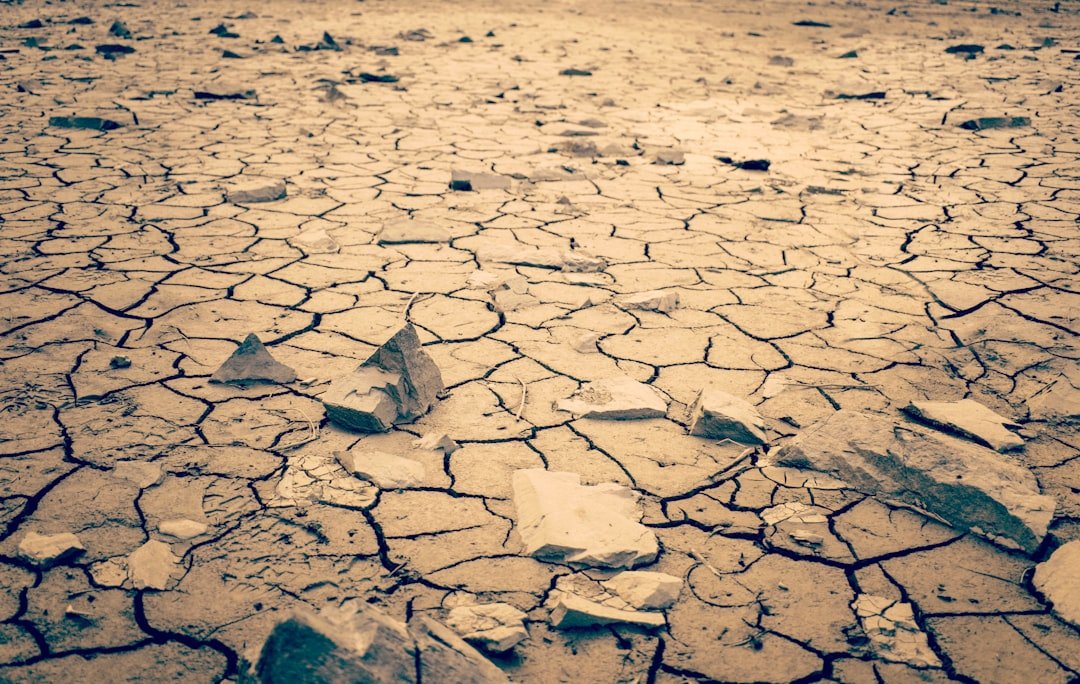An Extensive Examination of the Diverse Effects of Droughts Droughts are intricate natural occurrences marked by extended periods of unusually low precipitation, which can result in water shortages with potentially devastating effects. A multitude of factors, such as geographical features, human activity, and climatic conditions, can cause them. In terms of meteorology, droughts can be divided into three categories: hydrological drought, which affects the water supply in rivers, lakes, and reservoirs; agricultural drought, which impacts crop production because of inadequate soil moisture; and meteorological drought, which is defined as a notable decrease in precipitation.
Key Takeaways
- Droughts are caused by a lack of precipitation and can lead to water scarcity, crop failure, and economic hardship.
- Droughts can have a devastating impact on ecosystems and wildlife, leading to habitat loss and species decline.
- Agriculture and industry suffer significant economic losses during droughts, affecting food production and supply chains.
- Water scarcity and food insecurity are major social and humanitarian challenges during droughts, leading to displacement and malnutrition.
- Droughts can lead to disease outbreaks and public health crises, making it crucial to address health implications and access to clean water.
Every kind has different problems and calls for different solutions. Depending on the location and climate, the features of droughts can differ greatly. For example, because of their innately low rainfall, arid and semi-arid regions are more vulnerable to drought conditions. Yet, changes in weather patterns, like those brought on by El Niño or La Niña phenomena, can cause droughts even in areas with historically high rainfall. Also, droughts can vary in length and severity; some last only a few months, while others last for years.
It is essential to comprehend these subtleties in order to create strategies that effectively lessen the effects of droughts. Droughts can affect entire ecosystems and endanger wildlife populations, among other environmental consequences beyond just water scarcity. The loss of water sources makes habitats that depend on steady moisture more susceptible. Fish and other aquatic organisms have fewer habitats in aquatic ecosystems like rivers & wetlands as a result of dropped water levels.
Species that rely on these ecosystems for survival may eventually be impacted by the cascading effects of this biodiversity decline throughout the food web. Also, wildlife is not exempt from the consequences of drought. Many animals depend on particular habitats, which can become uninhabitable during extended dry spells.
| Country | Population Affected | Economic Impact |
|---|---|---|
| India | 50 million | 5 billion |
| United States | 30 million | 10 billion |
| Australia | 20 million | 3 billion |
Predators may find it difficult to hunt because of the reduced availability of prey, while herbivores may find it difficult to find enough food as vegetation wilts and dies. Drought conditions can also exacerbate the stress on wildlife populations by increasing competition among species for scarce resources. Ecosystems’ ability to bounce back from future shocks is also weakened when biodiversity is lost, which impacts ecological balance. Particularly for industries and sectors like agriculture that depend on water resources, droughts present serious economic challenges. Agriculture is frequently the most severely impacted because crops need enough moisture to grow.
Farmers experience lower yields during drought conditions, which can raise food costs and cause unstable economies. Prolonged droughts can cause significant financial hardship for farmers & rural communities in areas where agriculture is the main source of income. Drought affects not only agriculture but also sectors of the economy that rely on water for their operations.
For example, water shortages may cause operational disruptions in manufacturing sectors, which could result in lower productivity and possibly job losses. The drying up of natural features like lakes and rivers can also have a negative impact on the tourism sector by making them less appealing to tourists. Droughts can have a significant impact on national markets, international supply chains, and local economies. Drought’s social effects are also worrisome, especially in light of food insecurity and water scarcity.
Access to clean drinking water may become more difficult for communities as water resources become more scarce. Conflicts over water rights and the worsening of already-existing social injustices can result from this shortage. Because they might not have the resources or infrastructure to adjust to changing circumstances, vulnerable groups—including those in developing nations—are frequently disproportionately impacted by these issues. An additional urgent problem associated with droughts is food insecurity.
Lack of rainfall causes agricultural production to decline, which reduces food supplies and raises prices for many households. Malnutrition rates may increase as a result of this circumstance, especially for children and underprivileged populations. The logistical challenges posed by both the increased demand for aid & the limited availability of resources make it extremely difficult for humanitarian organizations to provide aid during droughts. Beyond the immediate worries about the availability of water, droughts can have serious health effects. A shortage of clean water can result in unsanitary conditions, which raises the possibility of disease outbreaks.
When communities are compelled to rely on tainted sources for drinking water, waterborne illnesses like cholera and dysentery become more common. Also, malnutrition brought on by food insecurity can impair immunity, increasing a person’s risk of getting sick. Another important but frequently disregarded factor in conversations about the effects of drought is mental health. Among impacted populations, the stress brought on by food shortages, water scarcity, and unstable economies can raise rates of anxiety and depression.
As they struggle with the uncertainty of their future, communities dealing with protracted drought conditions may feel hopeless. A comprehensive strategy is needed to address these health consequences, one that incorporates both long-term support for mental health services & immediate medical assistance. Personal Water Conservation Measures.
There are several ways that people & communities can cut back on water use, like installing rainwater harvesting systems or using drought-resistant landscaping methods. In addition to conserving water, these methods increase resistance to drought in the future. sustainable methods of farming. Sustainable agricultural methods that improve soil health and water retention must be given top priority by governments and organizations on a larger scale. Agroforestry, crop rotation, and cover crops are some methods that can greatly lessen an agricultural system’s susceptibility to drought. Also, enhancing infrastructure with effective irrigation systems, for example, can help farming operations use water as efficiently as possible.
promoting a sustainable culture. Societies can protect their natural resources and better prepare for the difficulties presented by droughts by promoting a sustainable culture. In order to effectively address the challenges posed by droughts, the government must act. It is imperative that policymakers create all-encompassing plans that cover both immediate relief initiatives and long-term planning for resilience development.
This involves putting in place early warning systems that keep an eye on weather trends and promptly alert people to possible drought conditions. These systems give communities the ability to plan ahead and take the required actions to lessen the effects. Policies pertaining to disaster management should also emphasize cooperation amongst different stakeholders, such as community members, NGOs, & local governments.
Participating in decision-making processes with communities guarantees that solutions are adapted to regional requirements and circumstances. Governments should also fund research and development projects that upgrade agricultural methods & improve drought prediction models. A proactive approach to drought management can help governments drastically lessen the negative impacts on their citizens. Droughts are predicted to become more frequent and more intense as climate change continues to alter global weather patterns.
Increased evaporation rates brought on by rising temperatures exacerbate water scarcity problems in already vulnerable areas.
The outlook for the future demands immediate action from communities, governments, & individuals. In order to adjust to these shifting circumstances, creative solutions that put sustainability and resilience building first will be needed. Mitigating the effects of future droughts will require investments in climate-smart agriculture, renewable energy sources, and better water management techniques.
Understanding how drought risk and climate change are related, societies can endeavor to build a more sustainable future that protects people and the environment. In conclusion, creating successful plans to deal with this urgent global issue requires an awareness of the complex effects of droughts. Droughts have wide-ranging and intricate effects, ranging from social difficulties to economic instability and environmental degradation. Societies can increase their readiness for drought-related challenges and build resilience in the face of uncertainty by emphasizing sustainable practices & proactive government responses.



